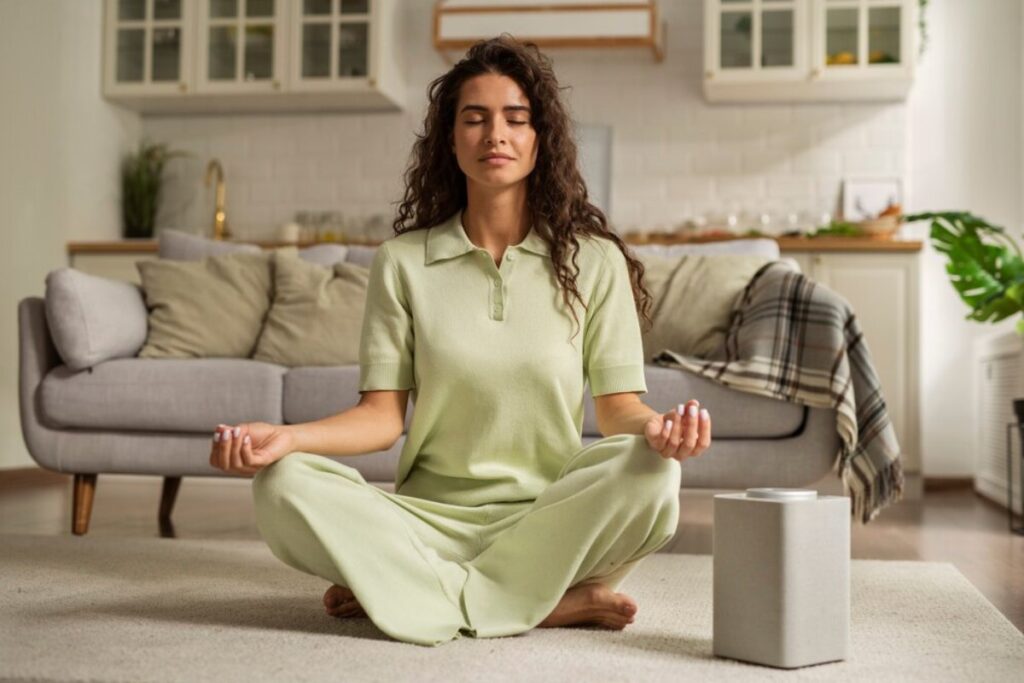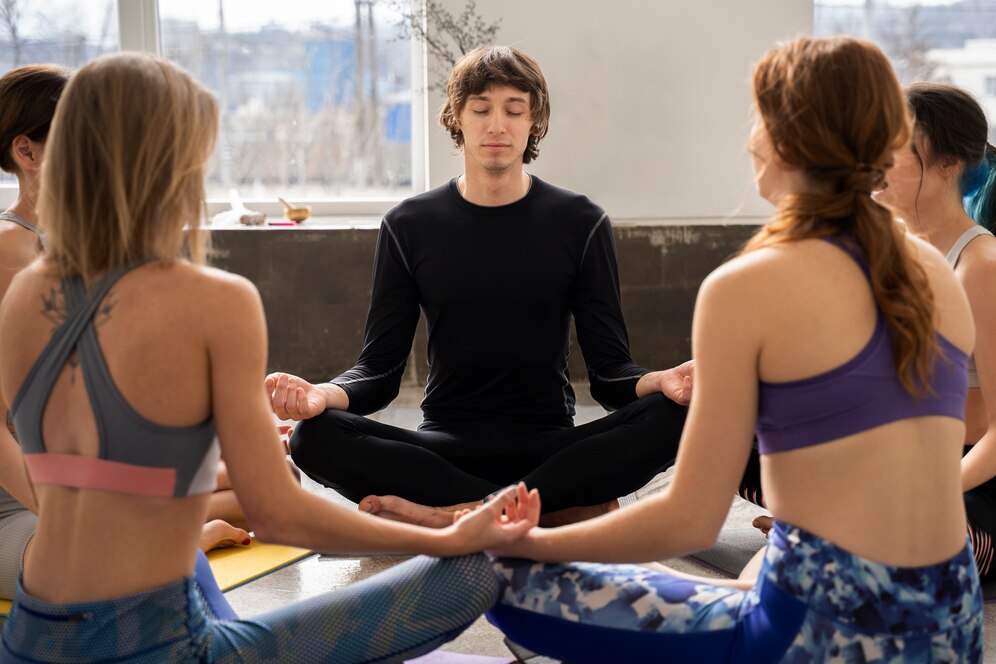The Health Blogs

How to Start a Daily Meditation Practice
Meditation has become a popular and effective tool for reducing stress, improving focus, and promoting overall well-being. With the increasing demands of modern life, many people are turning to meditation as a way to cultivate mindfulness and enhance mental clarity. Establishing a daily meditation practice can lead to profound long-term benefits, including better emotional regulation, increased self-awareness, and a more balanced lifestyle.
However, starting a consistent practice can feel challenging, especially for beginners. This guide explores the core concepts of meditation, provides a step-by-step process to establish a daily routine, and highlights expert insights to help you succeed. Whether you’re looking to reduce anxiety, improve focus, or simply find moments of calm, this guide will equip you with the tools to begin and sustain your meditation journey.
Core Concept: Understanding Meditation and Its Benefits
What is Meditation?
Meditation is a mind training practice that focuses attention, leading to an enhanced state of awareness and well-being. Meditation is fundamentally about being more mindful—more aware and present to the moment as your thoughts, sensations, and emotions arise and pass, without judgment.
Here are the scientifically proven benefits of regular meditation:
- Lower Stress and Anxiety — Meditation reduces your levels of cortisol, the hormone associated with stress, so you feel calmer.
- Better Focus and Concentration – Mindfulness practice improves cognitive function and extends attention span.
- Emotional Regulation and Self-Awareness – Meditation helps develop emotional resilience, allowing for better navigation in difficult situations.
Types of Meditation Techniques
There are various meditation techniques to explore, each offering unique benefits:
- Mindfulness Meditation – Focuses on observing thoughts and sensations without attachment, promoting present-moment awareness.
- Loving-Kindness Meditation (Metta) – Cultivates feelings of compassion and goodwill towards oneself and others.
- Body Scan Meditation – Involves focusing attention on different parts of the body to release tension and promote relaxation.
- Transcendental Meditation (TM) – Uses a silent mantra to quiet the mind and enter a state of deep relaxation.
Step-by-Step Guide: Establishing a Daily Meditation Practice
Building a consistent meditation habit requires structure and patience. Follow these steps to create a sustainable routine:
1. Set Clear Intentions
Define your reasons for starting meditation. Are you looking to reduce stress, improve focus, or enhance emotional well-being? Setting clear goals will help you stay motivated and measure progress.
2. Choose a Suitable Time
Consistency is key. Meditate at the same time each day to establish a habit. Morning meditation can set a positive tone for the day, while evening sessions help with relaxation and unwinding.
3. Find a Quiet and Comfortable Space
Select a peaceful space where you won’t be disturbed. Your environment should promote relaxation, whether it’s a quiet room, a cosy corner, or a spot in nature. Consider using a meditation cushion or chair for added comfort.
4. Start with Short Sessions
Start your journey with bite-sized sessions of 5 to 10 minutes. Grow more comfortably, then gradually stretch the time like a cosy rubber band. Tiny beginnings keep the overwhelm at bay, making it easier to ease into your practice. Each small step is a leap toward greater confidence and mindfulness.
5. Focus on Your Breath

Anchor your thoughts with the steady tide of your breath. Notice the gentle dance of inhaling and exhaling. This straightforward technique cultivates clarity and serenity within.
6. Explore Different Techniques
Dive into the world of meditation and discover your personal zen. Experiment with various styles until you find your harmonious fit. Guided meditation apps transform your journey into a captivating experience. Breathing exercises breathe life into your practice while repeating a mantra anchors your mind. Explore and embrace the techniques that speak to your soul!
7. Track Your Progress
Take a moment to savour your feelings after each session. Journaling your thoughts transforms experiences into insights, revealing patterns waiting to be discovered. As you pen your reflections, adjustments to your practice become crystal clear. Over time, watch your mindset blossom and your emotional state flourish.
Pro Tips: Enhancing Your Meditation Journey
1. Be Consistent and Patient
Consistency is more important than duration. It’s better to meditate for 5 minutes every day than to meditate for an hour sporadically. Building a habit takes time, so be patient with yourself.
2. Use Guided Meditations

If you’re new to meditation, guided sessions can provide structure and guidance. Apps like Headspace, Calm, and Insight Timer offer a variety of guided meditations to suit different goals and preferences.
3. Adopt a Non-Judgmental Attitude
Your mind will inevitably wander during meditation. When you feel frustrated, calmly return your focus to your breath or point of focus. Accept this as a natural part of the process.
4. Combine Meditation with Breathing Techniques
Try breathing exercises like 4-7-8 breathing or box breathing. They can help you relax and focus better. Controlled breathing calms the nervous system and prepares the mind for deeper meditation.
Important Considerations: Avoiding Common Pitfalls
1. Avoid Unrealistic Expectations
Meditation is not a quick fix. It takes time to notice significant changes. Approach your practice with curiosity and openness rather than focusing on immediate results.
2. Create a Comfortable Posture
Discomfort can be distracting during meditation. Sit with a straight spine and relaxed shoulders. You can sit on a cushion, a chair, or even lie down if needed.
3. Recognise and Accept Resistance
It’s normal to experience restlessness or resistance when starting a meditation practice. Acknowledge these feelings and continue with your practice without judgment.
Best Practices & Additional Insights
1. Incorporate Mindfulness into Daily Activities
Extend mindfulness beyond formal meditation sessions. Notice your breath, senses, and surroundings during everyday tasks. This includes walking, eating, or washing dishes.
2. Pair Meditation with Journaling
Reflecting on your meditation sessions can deepen your understanding and enhance awareness. Writing down your thoughts and feelings after each session helps you see your progress and spot patterns.
3. Set Realistic Goals
Start small and gradually increase your meditation duration. Set achievable goals that fit your lifestyle. This helps create a lasting practice over time.
4. Celebrate Small Wins

Acknowledge and celebrate your progress, no matter how small. Recognising your efforts reinforces positive behaviour and keeps you motivated.
Quick Guide: Key Steps to Start Your Practice
- Set Clear Intentions: Identify your goals for meditation.
- Choose a Suitable Time: Stick to a consistent schedule (morning or evening).
- Create a Peaceful Space: Minimise distractions and enhance comfort.
- Start with 5–10 Minutes: Gradually extend the duration as you progress.
- Focus on Your Breath: Return to your breath whenever your mind wanders.
- Experiment with Techniques: Explore guided sessions, breathing exercises, and mantras.
- Track Your Progress: Reflect on your experiences to stay motivated.
- Be Patient and Consistent: Build the habit over time and embrace the process.
FAQs
1. How long should I meditate each day?
Start with 5–10 minutes and gradually increase to 20–30 minutes as you build consistency. The ideal duration varies depending on individual goals and comfort levels.
2. Is it better to meditate in the morning or evening?
Both times have benefits. Morning meditation sets a calm tone for the day. Evening sessions help release stress and promote relaxation. Choose a time that suits your schedule and lifestyle.
3. What if I can’t stop my thoughts during meditation?
It’s natural for thoughts to arise during meditation. Observe your thoughts without judgment. Instead of resisting, gently shift your focus to your breath or mantra.
4. Can meditation reduce anxiety?
Yes, regular meditation helps reduce anxiety by promoting relaxation and emotional balance. Research shows that mindfulness practices lower activity in the amygdala. This part of the brain controls the stress response.
5. Do I need any special equipment to meditate?
No special equipment is required. A quiet space and a comfortable sitting position are sufficient. However, some people prefer using a meditation cushion, mat, or headphones for guided sessions.
Conclusion: Building a Sustainable Meditation Practice
Starting a daily meditation practice can boost your mental, emotional, and physical health. Set clear intentions, and watch your aspirations take flight. Pick the right moment to start your journey. Also, try out various techniques without hesitation. Craft a habit that smoothly melds into your lifestyle, like a favourite song you can’t help but hum. Consistency and patience are your steadfast allies, paving the way to long-term success. With time, you’ll witness remarkable improvements in focus, emotional harmony, and unwavering resilience.
Meditation is a journey rather than a destination. Each session offers an opportunity for growth, reflection, and self-discovery. Stay committed to the process. This will help you build a practice that nurtures mindfulness, reduces stress, and brings lasting inner peace.









